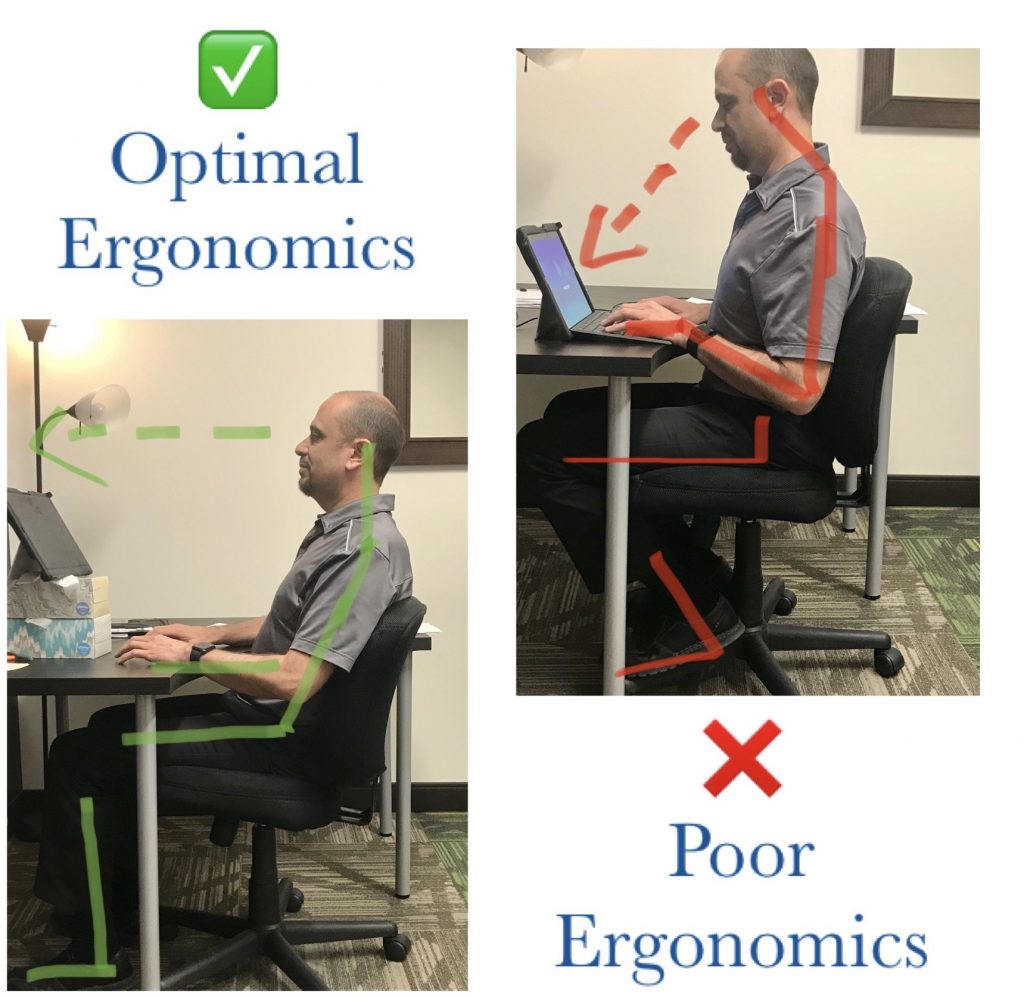With COVID-19 all around us, more and more folks are finding themselves working from home. This can be a wonderful opportunity to get work done for the boss, as well as periodic raids on the leftover lasagna in the refrigerator. All too often though, our home office is not set up quite as nicely as our “real” office. This can lead to repetitive motion injuries creeping into existence or slow down the healing of injuries we have already had. There are several things to be aware of when looking at how to set up your home office, and several things to avoid. Let’s take a look at some of the essentials.
The first thing to look at with your home office is your chair. This should be where you rule your office from. Your personal game of thrones seating arrangement so to speak…treat it as such. It is integral to the long term health of your body if you are spending hours there performing work for “the man.” Let’s start by adjusting your chair up or down to the point where wrists are parallel to the desktop as hands rest on the keyboard. Good. Now slide your gluteus maximus to the back of your chair. That should leave a couple of inches of clearance from the front of the seat to the back of your knees. This allows for good blood flow to your legs and helps to avoid varicose veins and other issues from diminished blood flow to your lower legs. I realize your mother constantly told you to sit up straight, but a little backward lean will reduce the strain in the low back. Instead of that 90 degree angle at your hips, try for more of 100-110 degrees. If your feet are not flat on the floor, let’s put something under them to give a good support to your legs. A ream of paper, old college texts, your old Star Wars lunch pale, the fruitcake grandma sent you for Christmas….whatever works as long as it lifts and maintains your knees around a 90 degree angle. Avoid tucking your feet back under your chair.
Next let’s tackle your desk. Once we clear all of the crumbs and Twix wrappers away, let’s move the keyboard to a centered position in front of you with the mouse immediately to its side. If possible, try to avoid wrist rests…they put increased pressure on the sensitive structures in the wrist. Lets move the telephone to your non-dominant side. This will prevent you from doing your best elephant man impression by having to crimp the phone between neck and shoulder and write at the same time. All other frequently used desktop items and materials should be located in a “near reach zone” to you. This way you will not have to repetitiously extend your arms to reach for things you use all the time.
Ideally, your monitor is about an arms length away and as you sit in your chair…unless you’re a Trex, in which case we’ll just say 20 inches or so. Your eye level should be about an inch or two from the top of the monitor to maintain a neutral head and neck. Most monitors need to be adjusted upward to prevent a forward head and neck tilt, which will cause frequent headaches. Again, you can use another ream of paper, books, or the like. Not the fruitcake…the all day smell would likely be toxic.
After your work station is set up, MOVE. It’s imperative to get up and move through the day. Somewhere between 30-60 minutes of being in a single position, blood vessels start to constrict and we get less oxygenated blood to the muscles and tissues that need it. This significantly increases our chances of repetitive motion injuries like carpal tunnel and tendonitis. Getting up to get a drink, use the restroom or scream at your neighbor for playing their music too loud is enough to allow the blood to flow. Perhaps setting an alarm or asking Siri for a reminder every 60 minutes through the day. Either way, movement is the key.

Finally, for additional details on posture and movement patterns, and how this is important to your home workstation, please check out the blog from Nika Ghassemekia on the Rebound website. She has some very insightful information that would be great to incorporate into your ergonomic setup.
Kevin Rhodes, OTR, CHT, CEAS


0 Comments